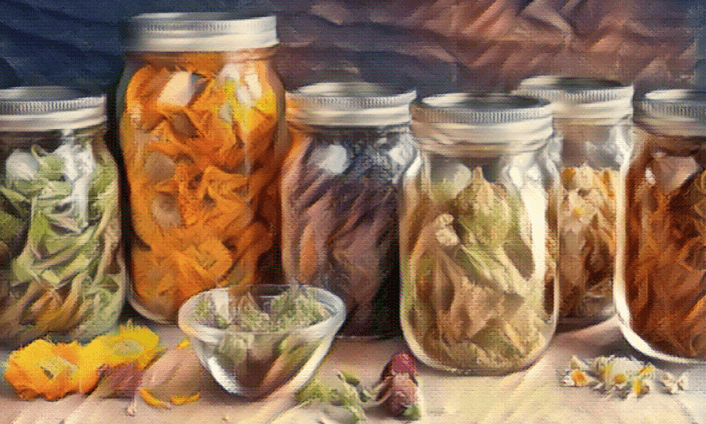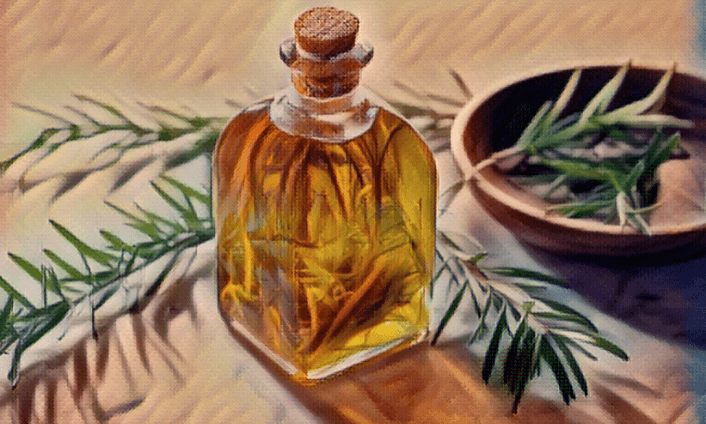Joint pain is one of the most common complaints that people ask about. Wether its a general achy-ness, or concentrated in one area… joint pain can make it hard to do the things that you want to enjoy.
Why do my joints ache?

Topical treatments can go a long way to help ease the discomfort of joint pain, and even help to support the healing of joint pain. But for healing to occur, it’s important to understand what’s at the root of the pain. There are hundreds of joints in the body, and different reason why they can start to hurt…
Osteoarthritis
This is a degenerative condition, caused by wear-and-tear. It tends to happen to your most used joints – often in the hand, hip or knee… Osteoarthritis is often felt more on a specific joint, rather than all over…
Drink herbs that nourish bones and joints:
- Horsetail (equisetum arvense): Rich in silica, has an “affinity” for joints. Helps to keep joints healhty, and correct swelling and inflammation. Boil horsetail as a decoction, or take tincture.
- Nettle (urtica): A tonic herb, supports the Musculoskeletal System. Rich in calcium and other minerals, nettles re-mineralize the bones. Drink as an herbal infusion: 1 oz nettle 4 cups hot water/brew 4 hours or overnight.
Rheumatoid arthritis
This is an inflammatory condition, whereby an overactive immune system attacks the joints. In this case, you might feel pain in your joints more generally all-over, or more than one joint.
Drink herbs that reduce inflammation in the body:
- Soothing Nervine: this group of herbs soothes the body’s stress response, and reduces inflammation. Drink oatstraw infusions, 1 oz oatstraw + 4 cups hot water/brew 4 hours or overnight. Make a bed-time tea with Passionflower, Skullcap and Chamomile.
- Anti-inflammatory Herbs: Ginger, Turmeric and Green Tea
Inactivity
Joint pain, and body aches can be caused by inactivity. The book Holistic Anatomy explains joint pain well, “When you move a joint, it makes fluid. When you are not moving, the joints dry up. This means our cartilage has a hard time getting the nutrients it needs to repair and replenish itself. Cartilage wearing out causes stiffness and inflammation in the joints.“
You can tell when your joints aren’t getting the lubrication they need: they make a crunchy sound when you move. They feel tender, and swollen. And eventually… feel painful because the cartilage wears down and the bones grind together.
Lubricate your joints with daily stretching and range-of-motion exercises.
With that said, topical preparations can be incredibly helpful with joint pain. This is actually an area where external herbalism shines!
Topical Herbs & Oils for Aching Joints

These are some of the plants that I think about for joint pain.
GINGER (Zingiber officinale)
- Benefits: Warms the joints, reduces stiffness, stimulates circulation, moves stagnant fluids (swelling)
- External uses:
- Infused ginger oil: massaged to the area
- Ginger powder: added to a bath (combine with baking soda, magnesium salt and/or epsom salts)
- Decoction: poured into a bath, or used for a compress
- Ginger poultice: applied directly to the area
CAYENNE (Capsicum)
- Benefits: Temporarily desensitises local nerves and decreases the sensation of pain
- External uses:
- Infused cayenne oil: massaged to the area
- Herbalist David Hoffman recommends the following remedy: 1/2 cayenne tincture + 1/2 glycerine. Glycerine helps to counter the drying effect of the alcohol, and helps to drive the medicine into the deeper tissues. Apply directly to the area.
- Notes: Ginger tea is a delicious anti-inflammatory remedy!
FRANKINCENSE (Boswellia)
- Benefits: A skin-wonder! Rich in anti-inflammatory compounds.
- External uses:
- Infused Frankincense oil: massaged to the area
- Notes: Resins have a long history of topical use for pain and arthritis. You can also use Myrrh, and Pine resins in the same way.
VIOLET LEAF (Viola)
- Benefits: Violet leaf is often used in breast massage balms, to help move blockages, and reduce lumpy breast tissues that feel tender, sore and swollen. This action would be beneficial in a joint pain balm, to move accumulation, and reduce swelling.
- External uses:
- Infused violet oil: massaged to the area
- Fresh glycerite: applied to the area
- Notes: Violet leaves are rich in salicylic acid (pain relieving) which infuses well into glycerine. Also consume violet leaf orally, as an herbal tea to boost flow, counter pain.
MUSTARD SEED
- Benefits: Mustard seed is an ancient remedy for pain and inflammation. Use mustard seed powder from the supermarket.
- External uses:
- Poultice: a paste of mustard seed powder and vinegar, applied directly to the area as a counter-irritant (similar to cayenne)
- Infused Mustard Seed Oil: use for making a compress soaked in the oil. Use castor oil for infusion.
- Mustard Seed Powder: There’s a famous product for baths called Dr. Singha’s Mustard Bath Salts, which if you look at the ingredients, it’s made with mustard powder, baking soda, and anti-inflammatory essential oils. This is something that you can recreate!
KAVA (Piper methysticum):
- Benefits: This is my top favorite relaxer for a tight, sore, achy body. Very good for nerve pain too (carpal tunnel, sciatica, pinched nerve)
- External uses:
- Infused Kava Oil: Massage directly over the area
- Kava Tincture: Massage directly over the area, or add 3 dropper-fulls of tincture to a warm bath.
PASSIONFLOWER (Passiflora incarnata L)
- Benefits: Often used internally to promote relaxation, and soothe tension. Externally, the relaxing effect releases muscular tension.
- External uses:
- Passionfruit Seed Oil: this is not an herbal oil infusion. The oil is pressed from passionfruit seeds. The plant’s muscle/tissue relaxing qualities are also present in the oil.
- Passion Flower Tea: Pour into a bath. Soak when the body/nerves feels tense – both physically and emotionally. When bodily tension creates a feeling of restlessness. Especially good before bed. Combines well with chamomile, and ginger to boost calming/soothing effects.
CASTOR OIL:
- Benefits: Traditionally used over aches and pains, and areas of inflammation
- External uses:
- Poultice: soak a plaster in warm castor oil and apply directly to the area
- Notes:
- Castor oil is very viscous, and has a heavy feel on the skin. It’s best used for treating small areas, rather than as an all-over body oil.
OMEGA 3 RICH OILS:
- Benefits: Omega-3 is important internally, to lubricate the joints. Omega-3 can be absorbed through the skin, when applied externally. Has deep-penetrating, anti inflammatory properties.
- External uses:
- Use as carrier oil for essential oils. This category of oils will have a lower shelf-life, and are heat sensitive. Add essential oils to the carrier oil, massage directly to the area. Store in the refrigerator.
- Oils high in Omega 3:
- Chia Seed
- Hemp
- Cranberry Seed
- Raspberry Seed
- Rose Hip Seed
- Evening Primrose
Aching Joints Remedies: Recipes from the blog

Here are two recipes that you can make to treat aches and pain. Include any of the herbs from the list above, to create your own special blend!
Deep Warmth, Ginger Infused Body Oil
Liniment Remedy, Achy Joints & Muscles

Leave a Reply